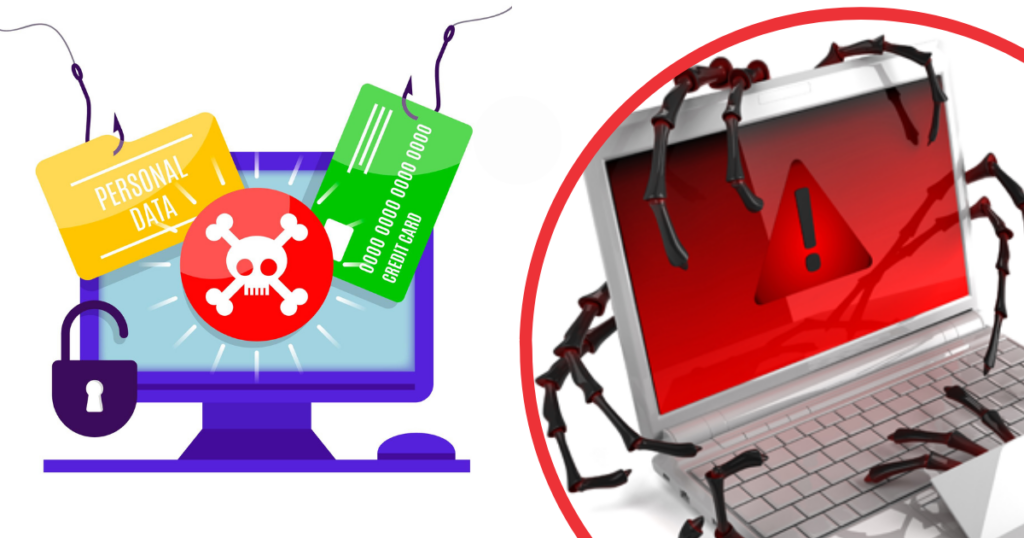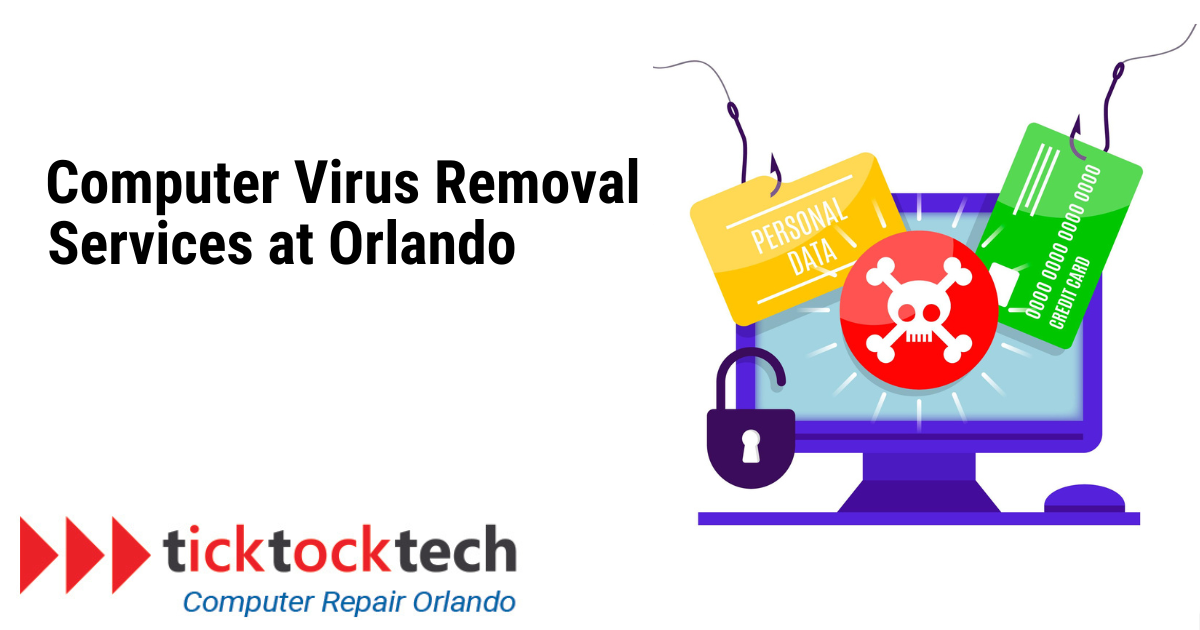Computer viruses are significant threats to everyone. If you think your computer is virus-infected, you have to act fast. In this article, TickTockTech will teach you how to identify and remove any virus from your computer.
What is a Computer Virus?
A computer virus is a type of malicious software designed to infect computers. The primary goal of a computer virus is to disrupt computer systems and result in the loss or exposure of sensitive data.

One unique feature of computer viruses is their capability to spread in programs and systems. Typically, they attach themselves to an executable host file, which means that when you open a file, their hidden code gets activated. Subsequently, this code propagates itself from the initial document or software to other parts of your computer system, using pathways such as networks, drives, file-sharing tools, or even infected email attachments. Here’s a breakdown of how computer viruses work:
- Infection: Once a virus is on your computer, it can attach itself to other programs or files, making it difficult to remove. When a user opens an infected program or file, the virus is activated and starts its malicious activities.
- Replication: Once inside a computer, a virus aims to replicate itself by inserting copies of its code into other files or programs. This allows it to spread to other parts of the computer or to other computers when infected files are shared.
- Harmful Actions: Computer viruses are generally harmful. Their actions include damaging files, stealing sensitive data, disrupting computer operations, displaying unwanted messages, and even taking control of the infected computer for malicious purposes.
- Propagation: Viruses often rely on human actions to spread, such as when you open an infected email attachment or download an infected file from the internet. Some viruses can also exploit vulnerabilities in computer systems to spread automatically.
- Concealment: Viruses often try to hide themselves from you and your security software. They also employ techniques to evade detection and removal, making them challenging to eliminate.
What are Computer Virus Removal Services?
Computer virus removal services are specialized services to identify and eliminate computer viruses from a computer or network. These services are essential when you suspect your computer or network could be virus-infected. Here’s what computer virus removal services typically involve:
- Diagnosis: The first step is to identify the presence and extent of the virus infection. This may involve scanning the entire computer or network to locate infected files, programs, or areas.
- Isolation: After identifying the infected components, the service provider isolates them to prevent the virus from spreading further. This may involve quarantining infected files or temporarily disconnecting infected computers from a network.
- Virus Removal: Technicians use many antivirus and antimalware tools to remove the virus from the affected computer or network. Technicians employ different methods depending on the complexity of the virus.
- Data Recovery: If the virus caused data loss or corruption, some services may include data recovery as part of their offering. This involves attempting to retrieve and restore lost or damaged data.
- Security Enhancement: To prevent future infections, the service provider may recommend and implement security enhancements. This can include installing or updating antivirus software, configuring firewalls, and educating users about safe online practices.
How to remove a virus from a computer
Removing viruses can be complex because you may not know what type of virus you’re battling and the extent of the infection. However, there’s a general step-by-step guide you can always use to remove computer viruses:
1. Disconnect from the Internet
The first step is to disconnect your computer from the Internet. This prevents the virus from communicating with its source or spreading to other computers.
2. Backup Important Data
Before attempting to remove the virus, back up your important files and data to an external storage device or cloud service. This ensures you don’t lose valuable information if something goes wrong during the process.
3. Boot into Safe Mode
– For Windows: Restart your computer and repeatedly press the “F8” key before the Windows logo appears. Choose “Safe Mode” from the Advanced Boot Options menu.
– For macOS: Restart your Mac and hold down the “Shift” key until the Apple logo appears, indicating Safe Mode.
4. Install or Update Antivirus Software
If you have an antivirus scanner installed, ensure it’s up-to-date. If not, install a reputable antivirus program. Also, run a full system scan to identify and quarantine/remove infected files.
5. Use Antimalware Tools
In addition to antivirus programs, you can use antimalware tools to scan and remove malware. Be sure to update these tools before using them.
6. Delete Temporary Files
– For Windows: Use the built-in “Disk Cleanup” tool to remove temporary files and unnecessary system files that the virus may have infected.
– For macOS: Manually delete temporary files from your Mac.
7. Remove Suspicious Programs
Uninstall suspicious or unfamiliar programs from your computer’s control panel (Windows) or Applications folder (macOS).
8. Reset Web Browsers
Reset your web browsers to their default settings to remove any malicious extensions or settings. In addition, change passwords for online accounts, especially if the virus may have stolen login credentials.
9. Restore Your System
If the virus infection is severe, you may need to restore your computer to a previous state using system restore (Windows) or Time Machine (macOS). Be cautious with this step, as it will revert your system to a previous state, and you may lose your recent data.
10. Update Your Operating System and Software
Make sure your operating system and all software are up to date with the latest security patches.
11. Reconnect to the Internet
Once you’re confident that the virus has been removed, reconnect to the internet, and continue using your computer normally.
12. Monitor for Suspicious Activity
Keep an eye on your computer for any signs of unusual or suspicious behavior and regularly update and run antivirus and antimalware scans.
If you’re unsure about this troubleshooting path or if the virus persists, it’s advisable to seek assistance from a reputable computer virus removal service.
Frequently Asked Questions
To find computer viruses, you need to use antivirus programs. Install a reputable antivirus program and run a full system scan.
To remove a virus, follow these steps:
– Disconnect from the internet to prevent the virus from spreading.
– Run a full system scan with your antivirus software.
– Delete or quarantine any infected files.
– Restart your computer.
– Update your operating system and all apps to their latest versions.
– Change your passwords, especially if sensitive information is at risk.
– Seek professional help if the virus persists or causes severe damage.
Conclusion
In this guide, we discussed how computer viruses work, computer virus removal, and the importance of computer virus removal services. If you suspect your computer is virus-infected, it’s crucial to take action quickly. If you reside in Orlando and you need a computer virus removal service, contact us at TickTockTech. Our experienced technicians will help you mitigate damage and protect your computer from further harm.

